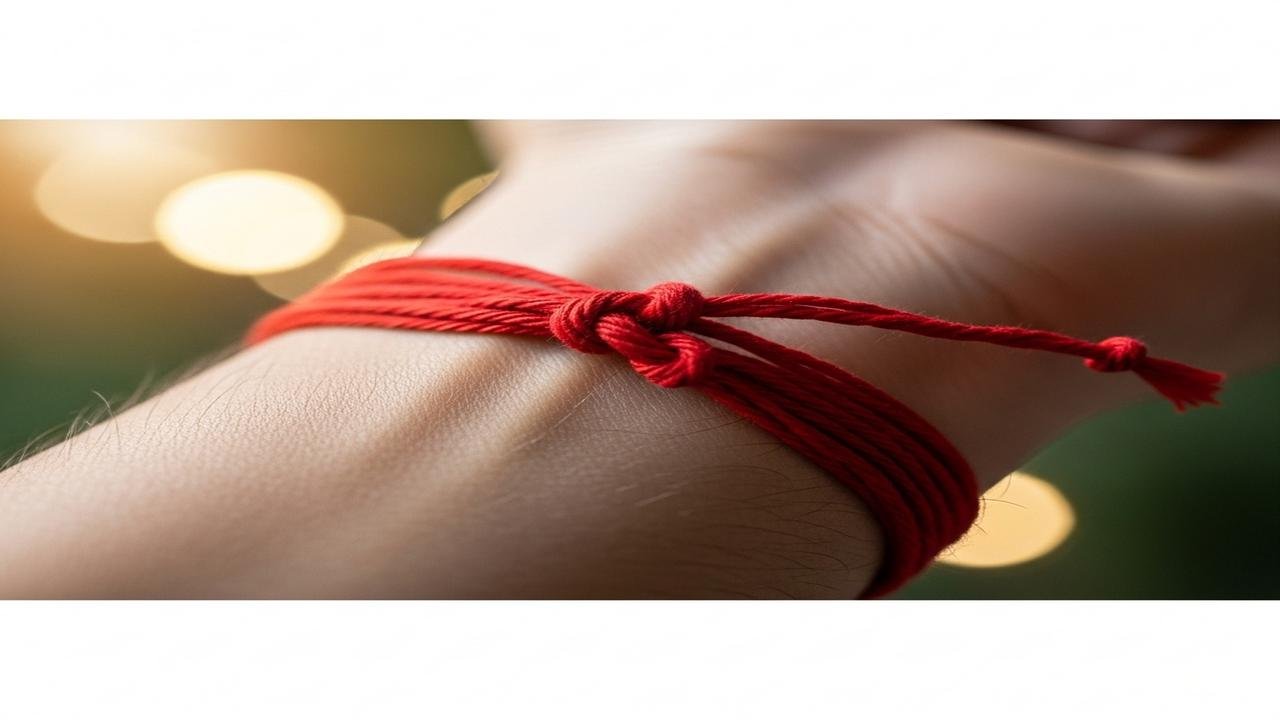The Secret Power of the Red Thread on the Wrist

The Red Thread on the Wrist: A Story of Blessing, Protection, and Remembrance
When I was a child, my grandmother would tie a thin red thread around my wrist before we stepped into the temple. Her fingers moved with the ease of years, and she whispered a short prayer. I felt warm, safe, and somehow wrapped in love. That small loop of thread stayed until it frayed, and every time I looked at it, I remembered her touch and the promise of that quiet blessing.
Why do people tie a red thread on the wrist? It is a simple question with many layers — cultural, spiritual, and deeply personal. Across homes and temples in India, that red thread, often called kalava, mauli, or raksha sutra, is more than a string. It is a symbol that connects us to family, to community, and to the divine.
The most immediate reason is protection. In Hindu belief, the red thread acts as a gentle safeguard. When a priest ties it during a puja, he often chants mantras asking the deity to watch over the wearer. Families tie it during festivals, ceremonies, or before a journey, invoking the divine to keep harm at bay. In a world full of worries, the thread serves as a tangible sign that someone — and something greater — is looking after us.
Another meaning is commitment. During vows, fasts, and rites of passage, the red thread marks a promise. It can remind a person of a vow to observe a fast, to act with discipline, or to honor a family tradition. For a bridegroom, a devotee, or a child receiving blessings, the thread is a small contract with the heart — a reminder to live according to the intention set during the ritual.
Color and symbolism matter. Red is the color of energy, life, and the goddess Shakti. It represents warmth, courage, and the power that sustains life. Often a yellow or gold thread is woven with the red, adding the blessing of knowledge and purity. Together they create a quiet language of hope and strength.
There is also a communal aspect. When a priest ties the thread in a temple, the same ritual ties people together — families, neighbors, and friends. During festivals like Navratri or Puja days, many wrists glow with the same red thread, reminding each person that they belong to a larger community of worship and care.
How is it used in daily life? Many people keep the thread until it naturally wears out, treating it with respect. Some remove it after a specific ceremony or when the vow is complete. Children may wear it constantly until it falls off. Etiquette varies by family and region, but the underlying attitude is reverence — it is not merely jewelry, but a blessed object.
In modern times, the red thread has traveled beyond temples and rituals. People wear it as a subtle talisman, a reminder to act kindly, to stay courageous, or to honor a loved one. It becomes a bridge between ancestral faith and contemporary life — a small practice that carries meaning without words.
Here are a few simple reasons why the thread matters:
- Protection: A symbol of divine shelter and warding off negativity.
- Blessing: A physical reminder of prayers spoken for health and peace.
- Commitment: Marks vows, fasts, and moral intentions.
- Community: Connects individuals to family and shared tradition.
Tying a red thread is a humble act that carries a world of feeling. It asks little — only that we remember to be mindful, grateful, and protected by love.
Conclusion: The red thread on the wrist is a small, powerful knot of belief. It ties us to our past and to one another, offering protection, blessings, and a quiet reminder to live with devotion. Next time you see one around a wrist, pause and remember the gentle promise it holds — a simple call to care, to courage, and to compassion.
